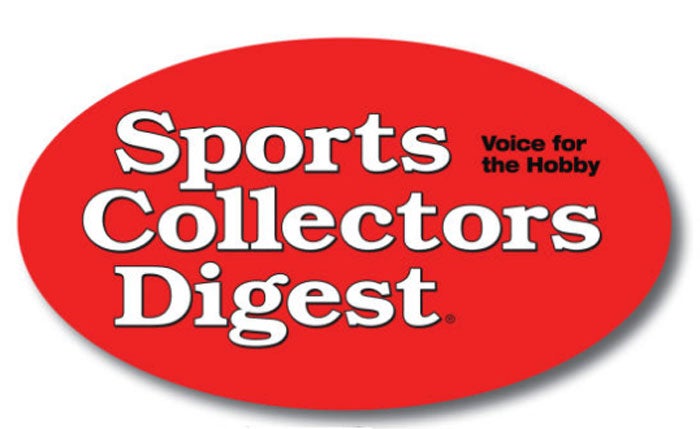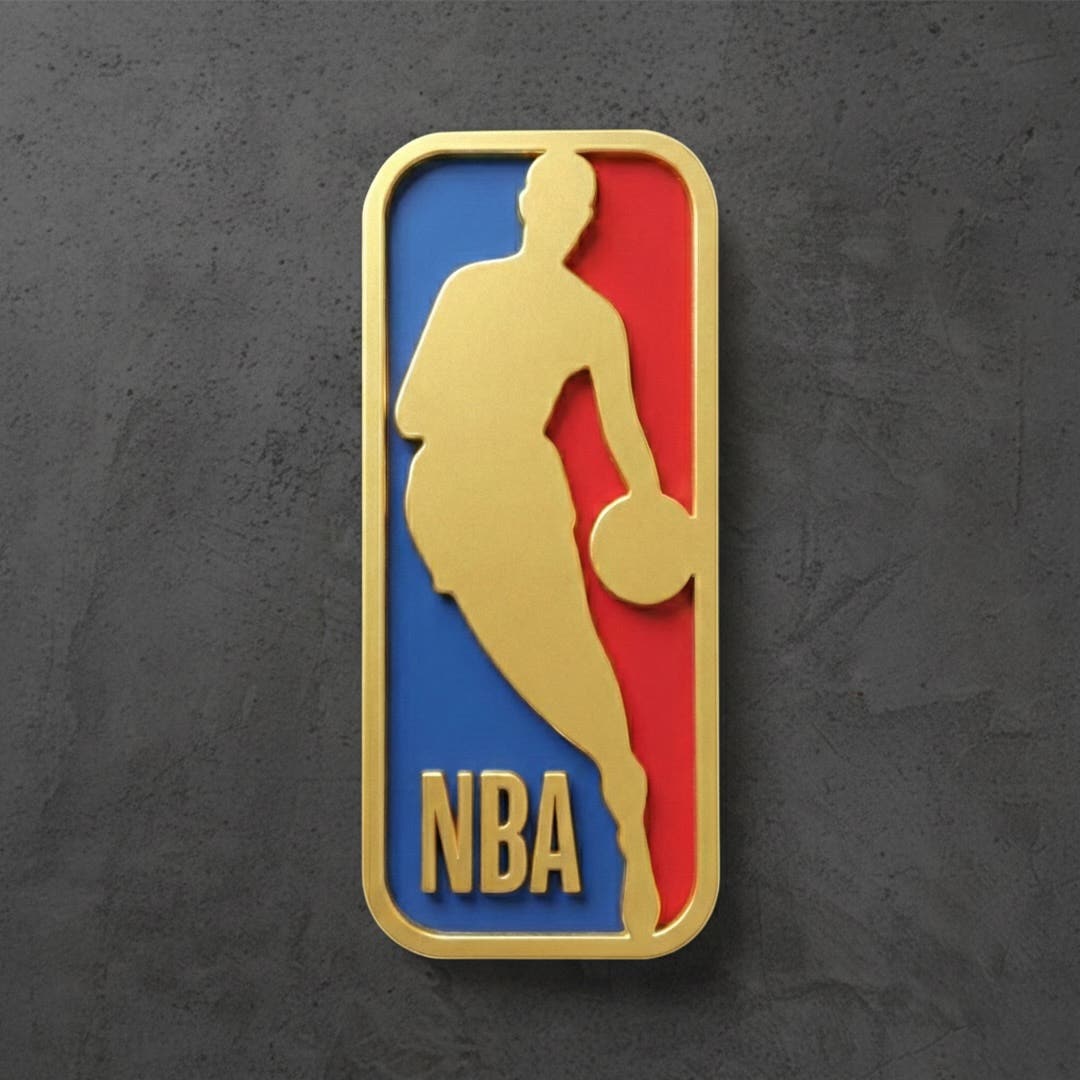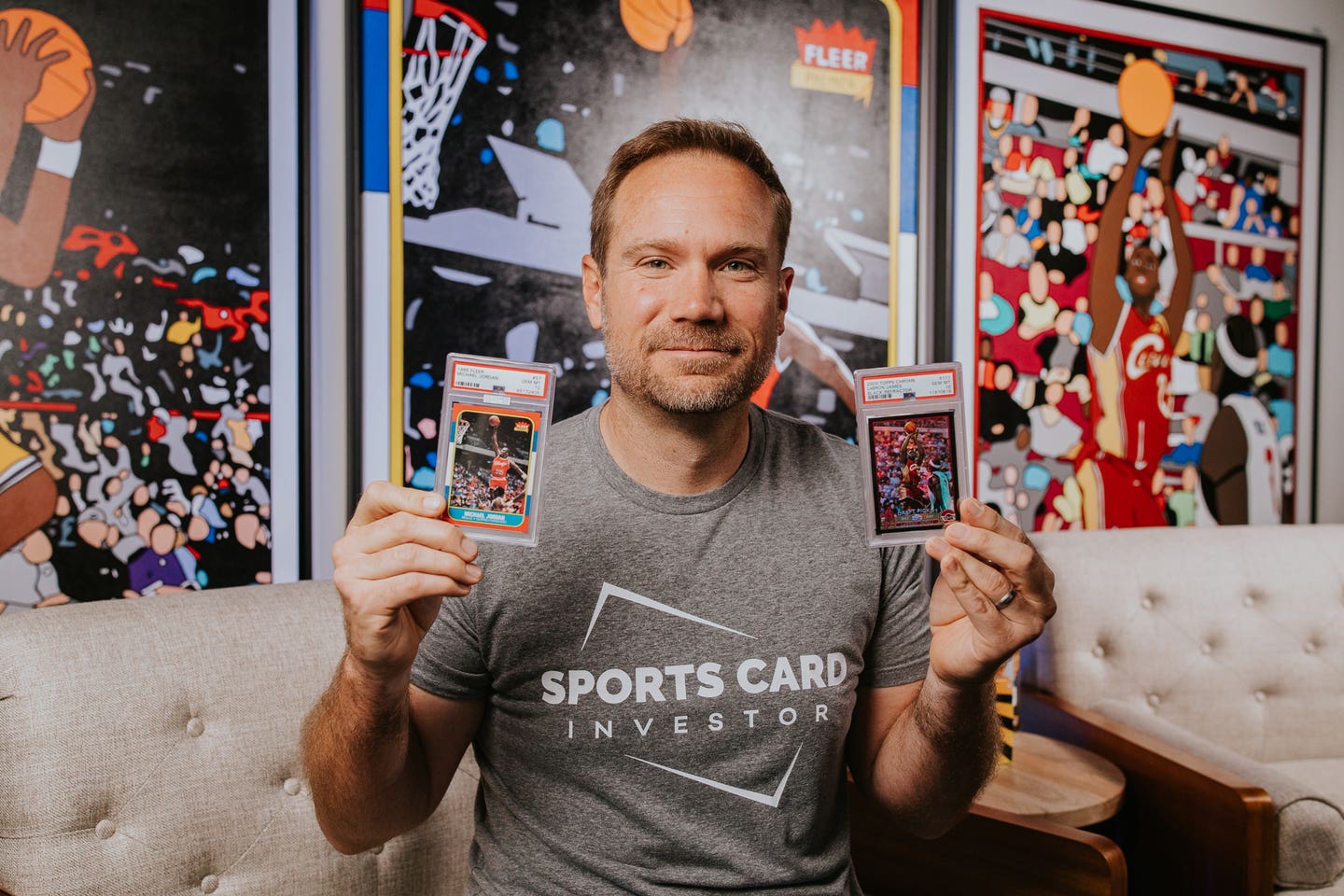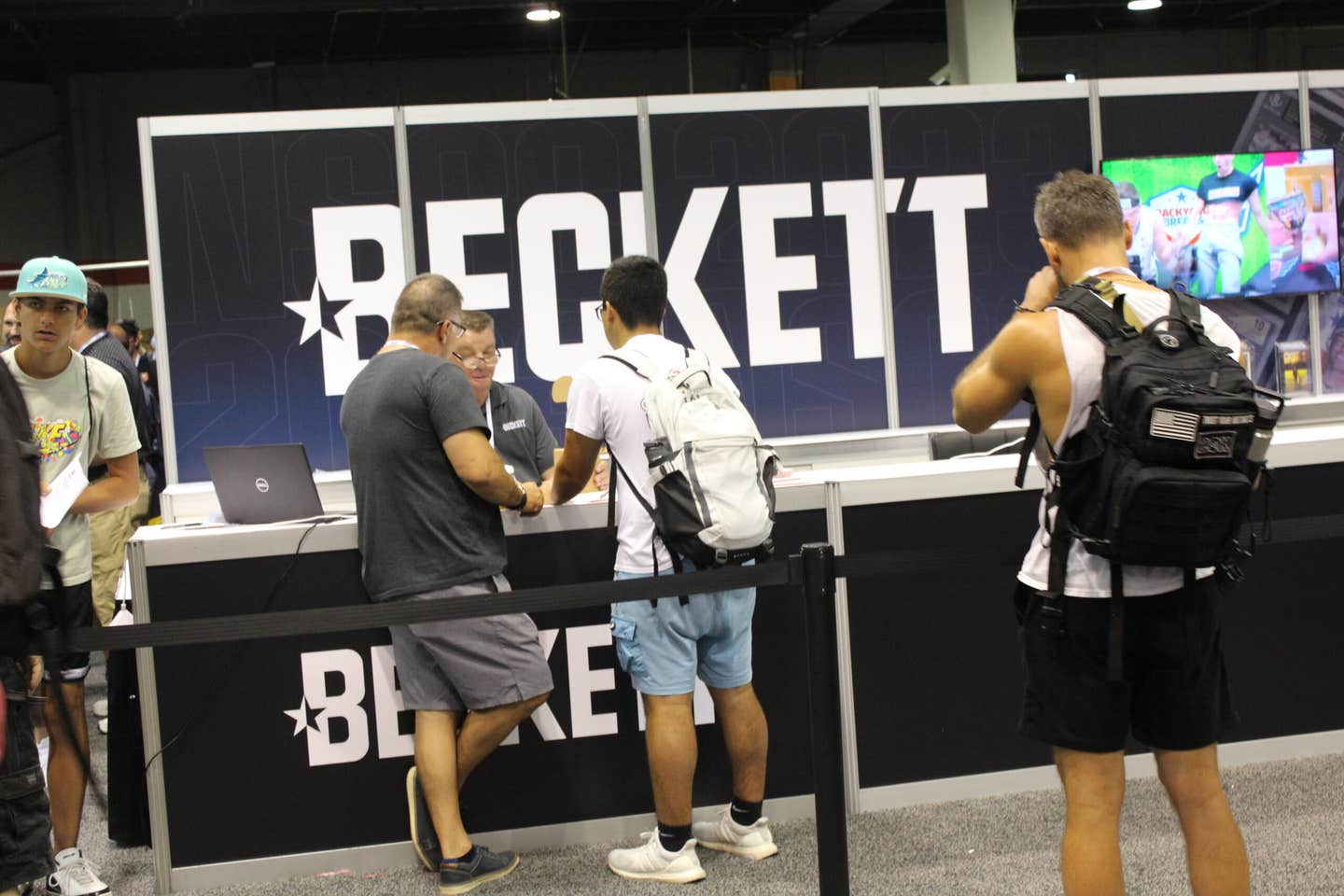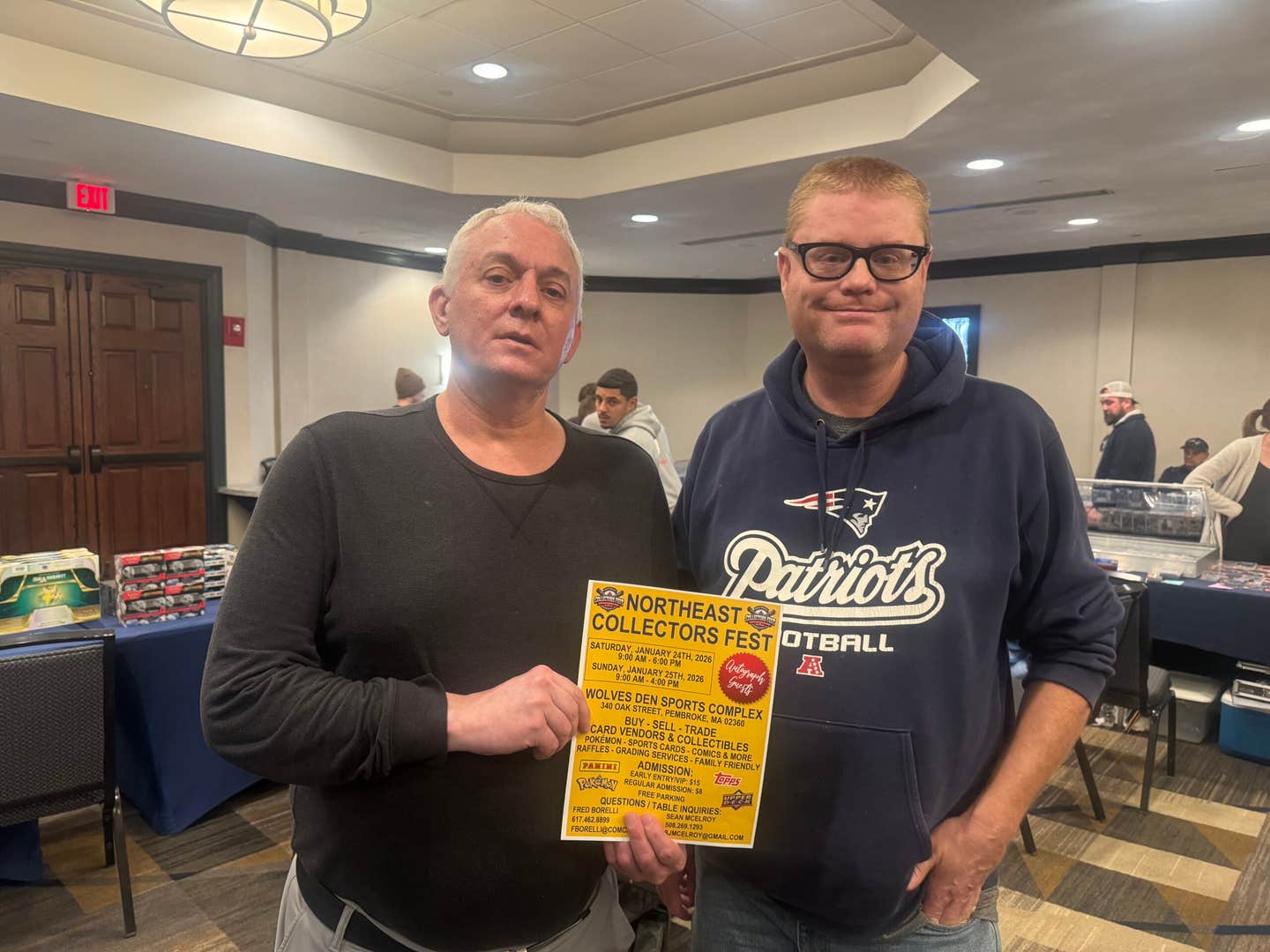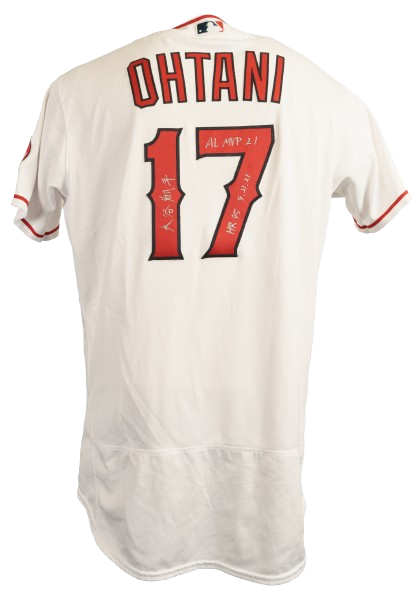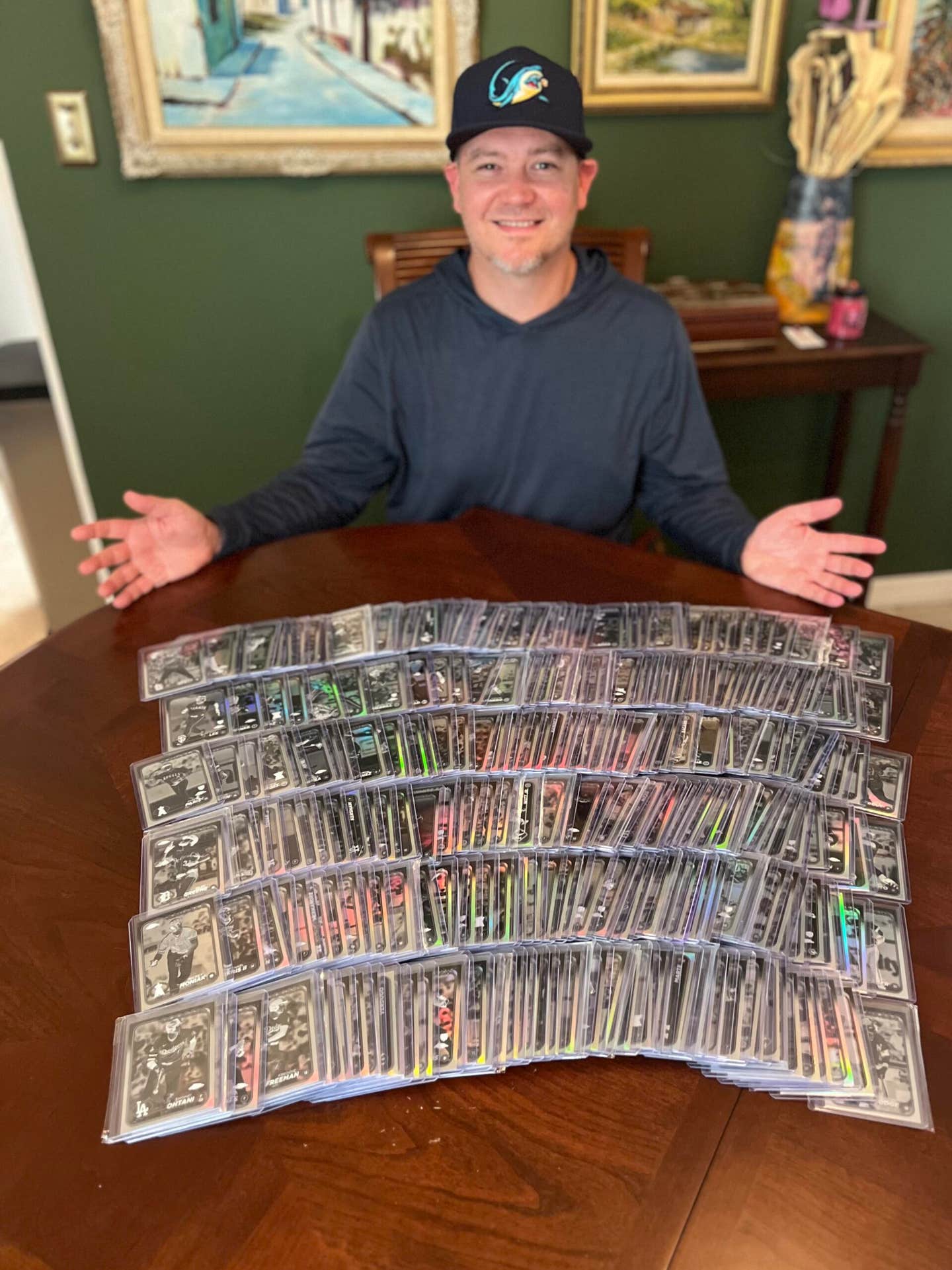Autographs
Former MLB star Curtis Granderson shares joy of signing autographs, collecting cards and leading kids to hobby
Three-time All-Star Curtis Granderson spent 16 seasons in Major League Baseball, suiting up for seven different teams during his memorable career.
The all-around outfielder led the league in triples in 2007 and 2008 and in runs scored and RBI in 2011, placing fourth in AL MVP voting. He finished his career with exactly 1,800 hits, nearly 350 homers, and just shy of 1,000 RBI.
The personable Granderson is now an MLB TV analysts for TBS, TNT and other media outlets and has been a studio analysts throughout the 2025 playoffs.
Related Content:
An incredible community presence, “The Grandyman” was awarded the Marvin Miller Man of the Year Award as well as the prestigious Roberto Clemente Award for his community service.
SCD contributor Tony Reid chatted with Granderson about his collecting experiences, including his first autograph request and a memorable fan interaction. He also shares his involvement in the Chicago Baseball and Educational Academy's partnership with the National Sports Collectors Convention to introduce card collecting to kids.
When was the first time you were asked for an autograph by a fan?
“Let's see, I don't think it happened in high school or even in college. I remember, I got drafted out of college that summer of 2002, so June 2002. I had a couple of buddies at the house, and my family was there. I think it was either like WGN or Fox Chicago came to the house and filmed that day. Someone said, ‘Hey, can you sign a ball?’ And it was either my friends, the media people, or something, and I had never known how to sign a ball, so I remember signing that particular time. But prior to that, I had been practicing what I thought my autograph/signature would look like back in high school when I should have been paying attention in class a couple times. I was ready for it. I finally had an opportunity to put it on something.
“Now I did not know where to sign on a baseball until I got to the minor leagues soon after I signed. I remember joining our team in Oneonta, N.Y. and they were passing baseballs around on the bus saying, ‘Hey, everyone has to sign it.’ And myself, plus a lot of other players, were in a very similar situation. We just grabbed the ball and wrote our signatures on there. So doing that, I remember our pitching coach, Bill Monbouquette, got up on the front of the bus and we stopped, and he just starts laying into us. He goes, ‘Hey, you guys, don't sign the sweet spot. The sweet spot is for the manager. Don't you ever sign this!’ I'm looking around like, what is he talking about? What do we do? What's the sweet spot? I've just been playing baseball and hitting the ball. I didn't know that there were certain spots you're supposed to sign, not supposed to sign, all this stuff. So that's when I learned you save that spot for the manager, and you sign accordingly. So everything turns and rolls into it. So, from my first autograph in June to joining my team probably in late June, I went from signing a ball to getting yelled at for signing the ball, all within every few weeks.
“Once you sign your contract in the minor leagues, eventually they want to get a baseball card for you. So, Topps comes around, and I think you sign a Topps deal, which I think is still the same deal that's today. It's like you get $1 up front, and then you get $500 for them to make your card, and then from there, you sign your name on the contract, and that signature becomes the first signature on a card. And I remember people asking me afterwards, ‘Can't you sign like this?’ I was like, that's slightly different. That's like, my signature, which is different than my autograph. And people kind of look at you differently. I was like, I kind of distinguished the two, for safety purposes? On my rookie cards, that, at the time, was my signature, which is different than my autograph, if that makes sense.”
You played for seven big league teams over 16 years, including both teams in New York, LA, north of the border, and in the southern part of the country. Do you have a most memorable fan interaction?
“So we did a children's book when I was with the Detroit Tigers called ‘All You Can Be,’ and it was illustrated by kids in the state of Michigan, and it's just kind of a little story about me growing up as a kid. Then there were the cool pictures that ended up in the book. Afterwards we do a book signing, and we're in a bookstore somewhere in the state of Michigan. I don't remember exactly where. So I had done signings before, and on this particular one, it was either a book signing or a card signing, but it was a signing on that day, and the people line up, you know, they've either purchased something they want you to sign, or they have what they want you to sign. Then they get in line, and then they come meet you. The way the table is set up, there's usually like a person collecting the ticket for the amount that they paid. Then there's a person that's counting the items, and then it's you, the athlete, and you have all these markers. You got blue Sharpies and silver Sharpies and gold Sharpies and black Sharpies and ballpoint pens and all this stuff, because different things go on different items. So, as I'm setting this all up, I don't I see the line is there, I'm not paying attention to it. So, as we get ready to start, I look up and the first person there was this young girl, and she was probably grade-school age, but she had on a tutu or ballet outfit or concert gear, because she was set to go to some other performance afterwards. And she looks up at me, and she starts crying. And I was like, ‘Oh, no, what's wrong?’ And she goes, ‘My parents surprised me and told me I was going to meet you today, and I didn't believe them, and here you are right in front of me.’ I was like, ‘Oh, well, don't cry.’ I stepped around the table, I gave her a hug, and she goes, ‘Well, since they told me I was going to be meeting you on the way to my performance, I also want to give you an invite to the performance. If you can make it I'd love for you to come.’ I was like, ‘Well, thanks for the invite. If I finish up early enough, I would absolutely love to come.’
“Unfortunately, I didn't get a chance to finish up early enough. But that reaction right away, I was not anticipating that. I was expecting, ‘Hey, can you sign this? Can you make it out to this? Use blue. Use silver. Use black.’ That's what I'm used to getting in those things, and this was completely different, and that's one that has always stuck with me. And I got an invite, she was one of the few people that actually gave me something versus asking for something.”
That's a really interesting part of the autograph experience. What percentage of people are just there for the transaction? What percentage do you think are there to truly meet you as their hero or as someone they watch and admire? And how many are really there as fans to just to meet Curtis Granderson?
“I think once you have paid for a ticket and waited in line there, there's a good number of fans. The opportunity for me to meet and see a person that I watch on television, that I see on the field, that has the same favorite number as I do, that's on the team that I play for. So, surprisingly, that number, I think, is relatively high. You do have some mixers in there where, you know, it is transactional. ‘Hey, I got this one-of-a-kind piece. I've been trying to get it [signed]. I haven't been able to do it. Here's a chance for me to do so and also have this valuable piece.’
“Now, on the flip side, the only negative side of it is you have people that also know you're going to be at this store at this time, and they're not going to buy a ticket, they're not going to wait in line. They're going to try to catch you walking in or catch you walking out. I've confronted a lot of those individuals, like, ‘Hey, here's an opportunity for you to come and meet [me]. You could have come in and chose to pay and support.’ Most recently, I did something at the New York State Hall of Fame where they do a great event. They sell their tables. People get their awards, they do all this stuff. And then there's people specifically outside that could have come inside and bought a ticket to this event and supported this great cause, but they chose not to, and they asked for the autograph, and I said, ‘No, I'll take a picture with you, but you could have come inside and supported this event. You know about the event, and you chose not to.’ Everyone inside, I signed for. No questions asked. You got one item, you got 10 items, I got no problem. I'm here helping to support this cause and this event. And these proceeds are going to there. These other individuals on the other side are there because of the opportunity to make this transaction. So I do think there's a mix. And I do think if you've come inside, you've waited in line, you've seen the opportunity to go to this place, those are some people there that are so excited to be there and meet these people for the first time, possibly, or a second time. Some of them come up say, ‘Hey, this is my fifth time seeing you.’ They're extremely excited. I think it's more of a mix on that side. But then there's people that know where you are, they're going to hound you, they're going to wait and they want to be there. They're going to catch you and do all those different things. So it's a little bit of a mix.”
Your first card appeared in 2002 Bowman Draft Picks and Prospects. When was the first time you saw yourself on a trading card? What were your thoughts then, and looking back now?
“One of the coolest things about being on those particular cards, you talked about the Bowman, the Topps and the Upper Deck, those are the three of my first year in the New York Penn League. And I've always been like [a] looking-at-details kind of guy. For example, I think it was my Upper Deck card. They have me base=running with no helmet, with just a hat. I was like, ‘OK, why didn't they have me put a helmet on?’ That's the first thing I thought.
“Secondly, I loved, as a collector, whenever there was an idea or chance for an error card. I remember the Ben McDonald rookie card was an error card, and I was like, I can hopefully get that error card one day. This is a more valuable card than the actual card. And sure enough, my first-ever card, one of them was an error card. Matt Pender was the other third-round pick for the Detroit Tigers. So I have a card with my face, but Matt Pender's name, so they've made two cards that year for me. One is obviously me running the bases with no helmet. The other one is a face shot of me with the wrong name. So, as crazy as that sounds, I was like, ‘I made it!’ This is so exciting! I was so happy to have had that moment. I think I still have that card somewhere here at my house. So, for me, that was one of the coolest moments of like I've arrived.”
That's when you know you're a true collector—when you know about error cards and are excited to have one.
“Yes. And then I've noticed it over the course of my career … when I got traded from the Tigers to the Yankees [in 2010], that spring training in Tampa, fans came up and asked for autographs at the game. Again, you're in the stadium, I'll sign for you, no problem. And the fan has a card, and it's a Yankee card. And I'm like, ‘Wait a minute, I haven't played a game for the Yankees yet. How do they have a Yankees card?’ So I'm looking at it closely, and there is the exact same Detroit Tigers card. It's in Comerica [Park]. I'm running what would be an extra-base hit in a game feed. And they just swapped out the uniform, and they put a gray New York uniform on me. And the reason I can tell the difference: they didn't swap out my wrist bands on my forearms. My wrist band was number 28 with the Tigers, and that being 28 is in this New York card, well, my New York number is 14. So, oh, that's what they did, little things like that. I was able to pick up on that. How do I have a card? It's March, I haven't played a game for the Yankees yet.”
Speaking of details, you have had 3,683 different cards produced over the years. Do you have a favorite card or most memorable card?
“Wow, I mean, that one stands out. There's definitely one that stands out. I wanted to make sure I had at least one card from every team. There wasn't anything specific, like, ‘OK, I need to get this one … .” You mentioned that many cards, I don't think I've seen all of them. … When people come up and ask for autographs, that's a lot of times I am seeing some for the first time, like the smaller cards, or someone actually had me sign like the plate, the [printing plate] they actually used to make the card, so that was cool. Then they started doing the jersey cards. So the thicker cards, I've seen some of those, which are unique. I always wonder, what jersey is that? Which one was it?
“Another unique one, I have a wrestling card from TNA where I'm holding the belt. So yeah, as a wrestling fan, not only getting a chance to be a part of that, but actually holding a belt. I know a lot of fans buy replica belts, [so I] got to hold the actual belt, then they made it into a card. So that's one that really stands out for me.”
Growing up, you were a Braves fan. What players inspired you most? Whose poster was on your wall? Whose cards were in your collection?
“Poster-wise, Ken Griffey, Jr. was and is still up in my room at my parents’ house to this day. … It has an 8-by-10 photo in it, and then it also has a card in it. It's probably, I don't know, call it 12 inches tall, and maybe 18 to 20 inches wide. It's not that big, but that's up, and it's part of the reason why it probably still is up, because it's not that big. So that was definitely one. And throughout the course of my collecting career, I tried to get as many Ken Griffey, Jr. cards as I could, except I never got my hands on the Upper Deck rookie card of his. A fan found that out and actually sent that to me. ‘Hey, I heard you've been looking for this one. Here you go. Thanks for signing so much stuff for me.’ So a fan actually gave me that one. So the girl invited me to her performance, and a fan actually gave me that card. So that's how I got it. I never got it in a pack. I never purchased it, so a fan actually got it. I fulfilled that dream of getting that one. I think I had the Rated Rookie one, but I didn't have the Upper Deck one, so now I have both.
“From the Braves side, I was a huge David Justice fan. He was one I had. If I had to think of the greatest number of cards, it would have been Griffey followed by David Justice. So having a ton of his cards was great and getting a chance to play in the pro ranks, there were a lot of things that I never thought would happen that I slowly just checked off the list. My first spring training, which is 2003, the Braves are in Orlando at Disney. I'm in Lakeland with the Tigers. We go play a game at Disney. I'm like, ‘I'm playing against the Braves.’ This is the minor league team, but still, that's the Braves over there. There's a big-league Braves game going on in the big stadium. So that was one I checked off the list. Then I got to play against the Braves throughout the course of my big-league career, and I've either faced or met some of the names I grew up with. First, Rafael Belliard was our infield coach with the Tigers, so I got to be around him, so that was cool. I faced Tom Glavine in spring training. I faced Greg Maddux. He was with the Padres at the time. I met John Smoltz through broadcasting. So those are some of the big ones. I met Ron Gant. I saw Terry Pendleton coaching. And throughout all this, all these great names, I still hadn't met David Justice.
“I finally meet him for the first time last year, broadcasting on TBS. He was one of our guest broadcasters, and he came in and I was like, ‘That's David Justice!’ I have to get a photo. So I snap the photo with him. I posted it on social. And what was the coolest thing about not only meeting him, but being around him for the show, is our show ended up relatively early that night. It was like a 9:45, maybe a 10 [p.m.] finish. He's like, ‘Hey, I'm hungry. You want to go get something eat?’ I was like, ‘Absolutely!’ So we go get something to eat afterwards and just get a chance to just chop it up and talk for like another hour or two hours afterwards. We've connected and stayed in touch ever since. That was like one of those moments, right? Here's the person I idolized. I wanted to see, got the chance and hadn't even thought about, like, ‘Hey, would you sign this card?’ For me, the pictures were my card. If I can get a picture with you, then that way, 50 years from now, I can look back and say, ‘See, I was with this person. I'm standing next to him.’ So that's always been, like, my big collectible.”
Your nonprofit, the Chicago Baseball and Educational Academy, recently partnered with the NSCC to get kids more involved in card collecting. Can you tell us about that project?
“I know it's a business, because, again, I've done signings, I just didn't realize the level of the business now and certain cards and how young people are getting into the business. I remember as a kid going to the local card shop, which was in somebody's garage, that was only open on Saturdays. You go in there, you only have $2. There's a bunch of cards you see that you want, that you can't afford, but maybe one day I'll have $10 and I'll buy that big card. Then it went to the strip malls and you got a chance to get packs and things like that. And now fast forward, here we are now and you can do all the same elements and the exciting side of it from the comforts of your own home on your own device and through that, introducing that to kids, some of which that may not know sports, but definitely know the idea of money, and that's what I've leaned into.
“I get asked to speak at a lot of schools, and one of the questions I always get is, ‘How much money did you make?’ And there's always someone in the background going, ‘Don't answer that.’ And I was like, ‘Why?’ You don't know what this kid's motivation is. That kid's motivation is, ‘I'm looking for something that makes a lot of money,’ and if this is it, now I'm interested, then great, I need to let them know. And the same thing holds true with the card collecting business and partnering with The National and saying, OK, here are people from around the world that have gotten to this business that they've created from their own home using their device. They've learned the art of negotiation. They've learned the art of seeing values go up and go down, and what causes those different trends, and how to be able to communicate and when to strike while the iron is hot, all skills that are going to transfer as they grow and move into homeowner purchasing, or if they want to get involved in the stock market, or if they want to sell a car or buy a car, all these different just real-world activities that all can begin at a young age with the idea of collecting cards. So, when the opportunity was presented, I was like, absolutely. We rolled it out with our first 50 kids. They got their packs, and the first thing is, you know, everyone's excited about opening up their packs and who they got and trades are happening right away. Hold your cards, you got to get them first, you know. But you see the interest and excitement just from that alone, and then all the other possibilities that can come from it.”
You've made such a commitment to the community over the years and won the Marvin Miller Man of the Year Award and the Clemente Award, what has inspired you to give back and be so active in the community?
“The biggest thing has been my parents. Both of them were educators. They both taught in the Chicago Public School System, and at the time, when I was younger, my school year would finish about a week to two weeks before their school year. And because of that, I was too young to stay at home by myself, so my parents would take me to school with them and they would throw me in a class or walk me around and take me to the cafeteria, whatever it was for the day. So, I actually got, like, an extra week of homework, all stuff that I had to do in class, nothing I took home. I had to do the work in class; I couldn't act up, I couldn't be bad. While walking the halls with them, seeing them interact with all the different diverse students, the staff members, the people that were above them in terms of priority and the people that were below them, and they were making everybody feel comfortable and laugh and say hello and do all these things. And especially even my dad, because he was a dean of students. You know, you don't want to see the dean, but he was still that way. And even to this day, I get approached by people that come up and … they either want to take a picture, they want to ask for an autograph, or they want to say, ‘Hey, are you Curtis Granderson?’ And now I've gotten a little confused, because the number of people that come up to me with the same look go, ‘Did your mom and dad teach? They taught me, or they taught my siblings, or they taught this ... .’ I still get it to this day. My mom retired in 2007. My dad retired just before that, so you're talking almost 20 years and people are still coming up saying, ‘Your mom taught me, your dad taught me.’
“So from that, I always took this as, your job title may be different than everyone's, but it's no more important than anyone else's, and how you treat people is how you will then be treated in return, and you're not here if it wasn't for the help of all those around you to help you get here. So that's always been just around me and something that was just second nature. You know, you help where you can. When I outgrew clothes, my parents would take them to school and give them to other people. When my parents made food, they always invited you in for a plate and made you take something home with you. So, I didn't know that was called giving back, I just thought, that's what you did. And now fast forward, I'm in this position where, you know I have I've been able to play in the major leagues and people know who I am, and I just feel like it's just second nature now I can hopefully help other people try to accomplish what it is they want to, or at least help them along their way. And I think that's just all been a byproduct of what my parents did for me at a young age.”

